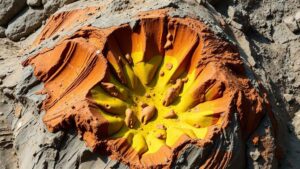Techniques for Recovering Silver From Shallow Placer Sediments
Techniques for Recovering Silver From Shallow Placer Sediments
Silver has long been valued for its aesthetic appeal and industrial applications. The recovery of silver from shallow placer sediments, where silver has been deposited through natural processes, presents a potential source for mining operations. In this article, we explore various techniques for recovering silver, examining their benefits, limitations, and practical applications in the field.
Overview of Placer Deposits
Placer deposits are accumulations of valuable minerals formed by the action of moving water. e deposits tend to concentrate in riverbeds, beaches, and other environments where sediment transport occurs. Silver, often found in conjunction with other metals such as gold, can be extracted through various methods.
Techniques for Silver Recovery
Several techniques can be employed to recover silver from placer sediments. Each method has unique advantages and operational requirements. most prominent recovery methods include:
- Panning: A traditional method that involves using a shallow pan to separate heavier minerals from lighter sediments through agitation and washing.
- Sluicing: This technique involves a long trough or channel designed to capture heavier particles as water flows through it, effectively concentrating the silver in specific areas.
- Magnetic Separation: In cases where silver is associated with magnetic materials, magnetic separators can assist in isolating these valuable minerals.
- Gravity Separation: Techniques such as jigs and shaking tables utilize the differences in specific gravity to separate silver from other materials.
- Flotation: This method involves adding chemicals that cause silver-bearing minerals to attach to air bubbles, allowing for their separation when the bubbles rise to the surface.
Panning
Panning is the most fundamental method of recovering silver. This method requires minimal equipment–a pan and water–and can be performed in remote locations. While it is labor-intensive and requires skill to master, it remains popular among hobbyists and small-scale miners.
For example, during the California Gold Rush, panning was commonly used to recover both gold and silver from river sediments. Its simplicity and effectiveness in areas with high silver concentration make it a viable option for initial prospecting.
Sluicing
Sluicing employs a more sophisticated approach, utilizing a channel with riffles to trap heavy minerals. The equipment can be set up along a river or stream, allowing for continuous processing of larger amounts of sediment compared to panning.
A case study in Alaska demonstrates the efficacy of sluicing in silver recovery. Operators reported obtaining silver concentrations above 500 grams per ton by implementing this technique in specific geological formations.
Magnetic Separation
Magnetic separation is particularly effective when the silver is found in association with ferromagnetic minerals. This method employs magnetism to attract and separate those entities, effectively increasing recovery rates.
For example, mining operations in the southwestern United States have successfully used magnetic separators to enhance silver recovery from mixed placer deposits, resulting in improved operational efficiency.
Gravity Separation
Gravity separation is a common technique in mineral processing that relies on the gravitational differences between materials. Jigs and shaking tables are widely used in the silver recovery process, allowing for precise extraction of silver-rich concentrates.
A notable example includes operations in Bolivia, where shaking tables have been reported to increase silver yield by up to 70% compared to other methods.
Flotation
The flotation technique is often reserved for more complex ores where silver is encapsulated in less dense particles. By introducing chemicals to create hydrophobic properties on silver-bearing minerals, this method allows for high-grade recoveries.
This process has been effectively utilized in multi-metal ore environments, such as those found in Canada, where silver is extracted along with lead and zinc through flotation methods.
Environmental Considerations
While recovering silver from placer sediments has immense economic potential, there are environmental concerns associated with mining activities. Techniques must be employed responsibly to mitigate negative impacts such as habitat destruction and water pollution.
Useing best practices, such as using biodegradable chemicals in flotation processes and rehabilitating disturbed areas, can help balance recovery efforts with environmental sustainability.
Conclusion
Recovering silver from shallow placer sediments involves a range of techniques, each with distinct benefits and considerations. By understanding and employing these methods appropriately, miners can enhance their recovery efforts while also considering environmental impacts. The choice of technique will ultimately depend on individual circumstances, including the geological context and scale of operations.
Actionable Takeaways:
- Evaluate the specific conditions of the mining site to determine the most suitable recovery method.
- Consider integrating multiple techniques for enhanced silver yield and efficiency.
- Stay informed about environmental regulations and employ sustainable practices in recovery efforts.


